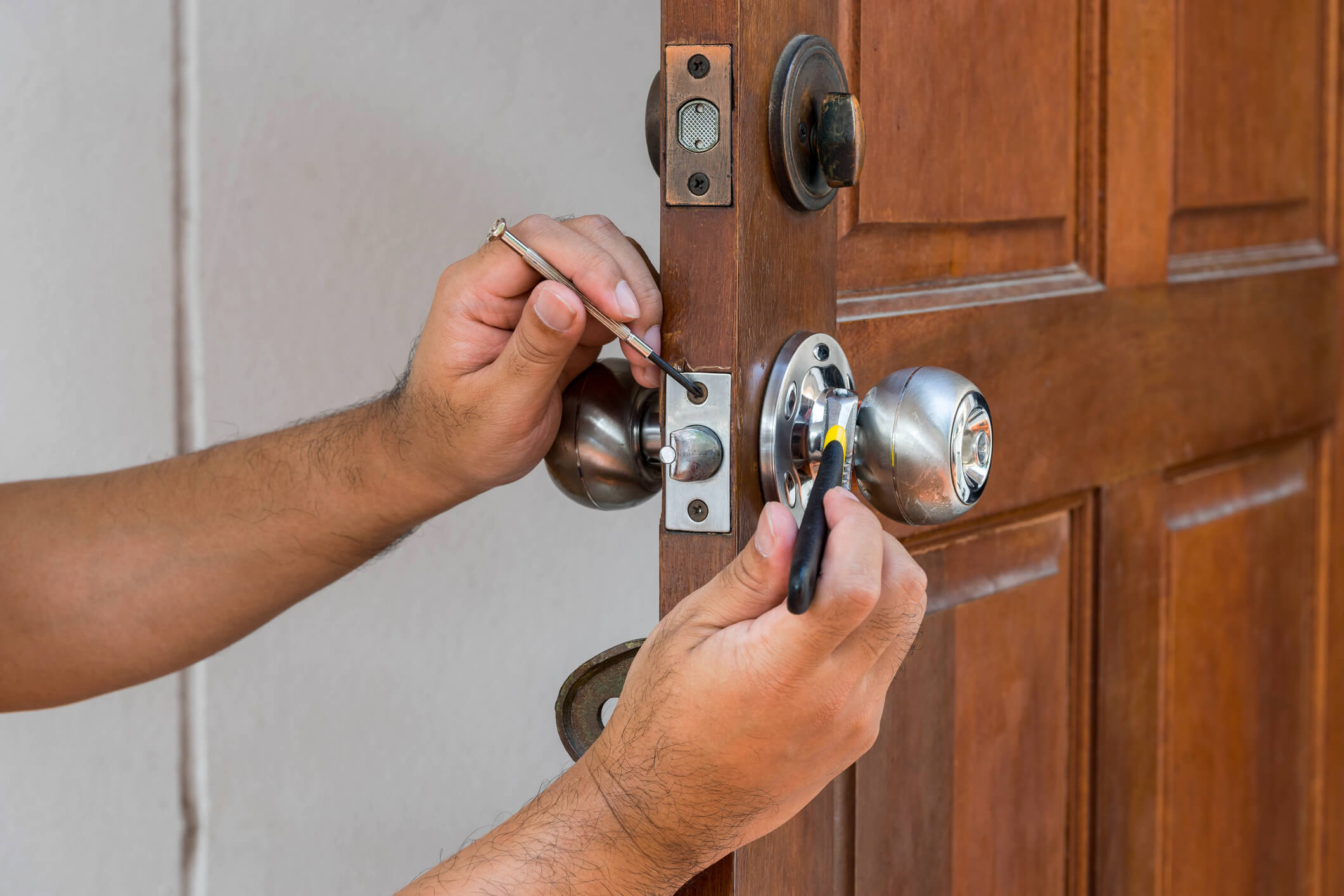How to Fix the Most Common Lock Problems?
How to Fix the Most Common Lock Problems?
Having a reliable lock on your front door is crucial for the security of your home. However, lock issues can arise unexpectedly, leaving you stranded outside your own home. You may have a stubborn lock that refuses to open up at times. Or your key gets stuck in the lock, and you’re unable to enter or leave your house.
You see, we understand the inconvenience and stress lock problems can cause. Apart from frustration, it can leave you vulnerable and anxious about your home’s security. Therefore, you must know what you should do if a lock emergency arises at an inconvenient time. It will save you time and money and offer peace of mind.
In this blog, let’s explore the secrets to maintaining smooth and reliable locks that never let you down. We are listing the most common lock problems and the solutions to fix them.
The Most Common Lock Problems and Ways to Fix Them
1. Latch or Bolt Not Extending Completely
One of the most frustrating lock problems homeowners often face is when the latch or bolt only partially extends. As a result, you can not lock the door or keep it securely closed. It is a significant lock problem as it can compromise the security of your home.
There are several reasons for a latch or bolt to not extend completely. You need to understand the potential causes and know how to address this problem to maintain a secure living environment.
Potential Causes of Latch or Bolt Not Extending Fully
- Misaligned Strike Plate
The strike plate is the metal plate on the door frame into which the latch or bolt engages when the door is closed. If the strike plate is not correctly aligned with the latch or bolt, it can prevent the door from closing properly and the latch or bolt from fully extending. - Dirt and Debris in the Latch Mechanism
Your latch can accumulate dirt, debris, or grime over time, hindering its smooth operation. This build-up can cause the latch to stick, preventing it from fully extending when the door is closed. - Worn or Loose Latch Mechanism
Continued use and wear can lead to the latch mechanism becoming loose or worn. If the latch is not firmly secured in its housing, it may not extend fully, resulting in an improperly locked door.
DIY Solutions to Address Latch or Bolt Not Extending Fully
- Adjust the Strike Plate
If you want to fix the misalignment issues of the lock, try to adjust the strike plate slightly. To do so, you need to loosen the screws that hold the strike plate in place. Once it is loose, carefully reposition it to align it with the latch or bolt. And then, tighten the loosened screws securely. - Clean the Latch Mechanism
The latches of your locks can accumulate debris and dirt over time. These prevent them from functioning properly. You can use a soft brush or compressed air to remove tiny dirt particles. Also, apply a small amount of graphite lubricant to the latch; it can facilitate smoother functioning. - Tighten or Replace the Latch Mechanism
In case the latch is loose or worn, you need to tighten the screws to get it to function smoothly. It is possible that the screws are too worn out and don’t function even after you tighten them. So if the problem persists, you should replace the latch mechanism with a new one with the help of an emergency locksmith in Sydney.
2. Key Refuses to Turn in the Lock
Imagine – you come home after a long, tiring day, desperate to catch a moment of relaxation. You take out the key from your pocket and turn it into the lock, but it doesn’t budge. Panic sets in as you realise you are locked out of your home. Well, we wouldn’t want you to be in this situation. So here are common causes behind this problem and their solutions –
Potential Causes & Solutions to Why a Key Doesn’t Open the Lock
- Misaligned Door
Over time, doors can shift and settle. It can happen due to temperature and humidity changes, door usage, wear and tear or your home settling. As a result, you may face misalignment with the frame. It puts extra pressure on the lock mechanism, making your key ineffective.
Solution
Try gently pushing or pulling the door while attempting to turn the key. If the door moves or wiggles, it’s a clear sign of misalignment. You can adjust the hinges to realign the door to ease the pressure on the lock mechanism. You can also call a 24-hour emergency locksmith in Sydney for professional assistance. - Worn-out Key or Lock
After a certain time, keys and locks wear down and can lose their precision. It can happen due to frequent usage. As a result, the key loses the grooves needed to engage the lock effectively.
Solution
The easiest way to know whether your key is working out or not is by trying a spare key. If it works, your old key is worn out. It’s time to get a new one.
However, if the spare key also doesn’t work, you should inspect the lock. Contact Xtreme Locksmiths – Sydney’s trusted locksmith service – to assess the lock’s condition and determine whether a repair or replacement is necessary. - Debris or Dirt in the Lock
Locks are in constant touch with dust, dirt, and debris. These elements can accumulate within the lock and hinder the key’s smooth insertion and rotation.Solution
The first step is to inspect the keyhole. If you find any visible dirt or debris, you need to clean it. You can use compressed air or a lock lubricant to clean the lock and remove unwanted particles. If you suspect rust as the cause, get a specialised rust cleaner to restore the lock’s proper function. - Frozen LockWinter can be particularly unforgiving to locks. In the colder months when the temperatures cause freezing circumstances, moisture or water can seep into the lock mechanism. It can result in a frozen lock that resists your key.
Solution
Try using a hairdryer or warm (not boiling) water to defrost the lock. If you apply the light heat source directly to the lock for several minutes, the ice would melt. As a result, the key will regain its mobility.
3. Broken Key in the Lock
You are trying to unlock your lock using the key. You experience some friction, so you apply force twisting the key at different angles, and suddenly, you hear a crack. And bam, the key is broken. And that’s not all – it’s now stuck in the lock. It is a distressing situation which prevents you from using the lock altogether.
Solution
Your first instinct must be to extract the broken key from the lock. However, doing so without causing further damage can be a challenging task. So here’s what you can do –
- You can use needle-nose pliers or tweezers to carefully grasp the key and pull it out.
- If the broken key is stuck too deep into the lock, use a lock lubricant or graphite powder to ease the extraction process.
- Go to a hardware store and buy a key extractor tool. All you have to do is hook the tool onto the broken key’s teeth to pull it out.
- If everything fails, your last resort is to seek the expertise of a 24-hour emergency locksmith in Sydney. They will help you design a master key by locksmiths.
4. Stuck or Broken Internal Lock Parts
Are the internal parts of your lock stuck or broken? Well, you may need to disassemble the lock mechanism for repair or replacement. However, it is a complex problem and requires the necessary expertise to approach the situation with caution.
DIY Solutions to Address Stuck or Broken Internal Lock Parts
If you don’t have professional locksmithing skills, it’s wise to call Xtreme Locksmiths by browsing ‘locksmithing near me’ online. However, if you want to take some general steps, here’s what you can do –
- Remove the lock carefully from the door. Also, remember that most locks can be disassembled once they are removed. It makes it easier to access and inspect the internal components.
- Examine the internal parts for any signs of damage, misalignment, or foreign objects. You may find worn-out or broken components that may need replacement.
- Do you see dirt or corrosion in the internal parts? If yes, use a lock lubricant or a specialised cleaner to clean the internal parts thoroughly. After cleaning, apply a suitable lock lubricant to ensure smooth operation.
- If the internal parts are damaged, you may attempt to repair or replace the broken or worn-out parts. However, keep in mind that some lock components are intricate and may require specific tools and expertise for proper repair.
- Once you have addressed the issue, carefully reassemble the lock. Ensuring all parts fit back into their respective positions correctly.
- Reinstall the lock on the door and test its functionality to ensure the problem has been resolved. If the problem persists, don’t hesitate to take professional help.
Final Remarks
If you want to maintain the security and efficiency of your home or business, it’s crucial you know how to deal with common lock issues. Be it a key that won’t turn, a latch that won’t extend or broken keys, knowing solutions can save you time.
However, you can’t fix all the lock problems without expertise. In fact, doing so can make matters worse. So if you face unexpected lock challenges, don’t hesitate to reach out to Xtreme Locksmiths. Our experienced and skilled locksmiths can offer top-quality key repair and lock installation services. Call us anytime to avail our emergency locksmith service in Sydney.


